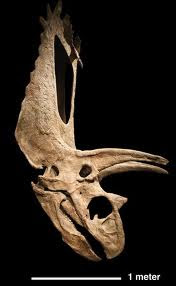The little horned dinosaur fills an important gap in the evolutionary history of small-boned dinos.
The oldest and smallest horned dinosaur in North America finally gets a name after decades of research. The little horned dinosaur (Gryphoceratops morrisoni), measuring 1.6 feet (0.5 meters) long, lived about 83 million years ago. The new study also describes another newly named species of horned dinosaur: Unescopceratops koppelhusae, which lived 75 million years ago, in what is now Alberta, Canada.
The first jaw fragment of U. Koppelhusae was discovered in Dinosaur Provincial Park in 1995, but has just recently gotten a name; the other, G. morrisoni, was first discovered in 1950, but remained unnamed until recently.
The duo was much smaller than their larger Triceratops and Torosaurus relatives: U. koppelhusae measured about 6.5 feet (about 2 m) in length and weighed less than 200 pounds (91 kilograms). The researchers consider the other newbie, G. morrisoni, the smallest horned dinosaur in North America and one of the smallest plant-eating dinosaurs known.


.jpg)







No comments:
Post a Comment